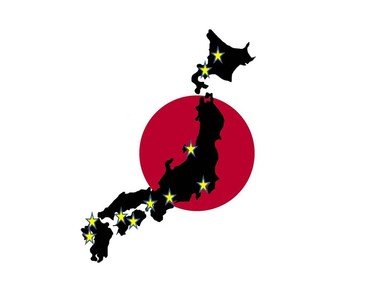
The Not-So-Mega Cities of Japan Quiz
Locations of Japanese Cities
When Westerners discuss Japanese cities, the biggest cities such as Tokyo and Osaka plus the cultural capital of Kyoto will nearly always get mentioned. However, Japan is such a diverse place. This quiz features other beautiful Japanese cities.
A classification quiz
by 1nn1.
Estimated time: 3 mins.
- Home
- »
- Quizzes
- »
- Geography Trivia
- »
- Asia
- »
- Japan